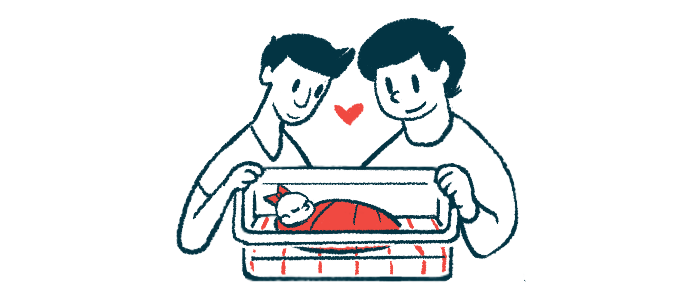Higher SMA Rate in Japan Linked to Awareness of New Therapies: Study


The incidence of infantile spinal muscular atrophy (SMA) has increased in Japan since 2016 and this could be related to greater disease awareness among clinicians, earlier diagnoses, and the introduction of new treatments — although this relationship remains to be established, a study has found.
On the large Japanese island of Shikoku, SMA affected an estimated 7.08 per 100,000 live births from 2016 to 2020, a marked increase from previous years.
Researchers also say that the emergence of newborn screening (NBS) programs for the disease will further increase the number of diagnoses in the future.
“It is our hope that NBS for SMA will become widespread worldwide because these programs will certainly increase the number of patients with SMA who are treated earlier with newly available drugs,” researchers wrote.
The study, “Changes in the Incidence of Infantile Spinal Muscular Atrophy in Shikoku, Japan between 2011 and 2020,” was published in the International Journal of Neonatal Screening.

Boy With SMA Type 2 Able to Walk, Play Wearing Exoskeleton at Home
Genetic testing and newborn screening enable more accurate, timely diagnosis
The emergence of genetic testing has enabled a more accurate and timely diagnosis of SMA. In particular, with NBS programs being used more worldwide, such screenings allow newborns to be diagnosed before leaving the hospital.
Most cases of SMA are caused by mutations in the SMN1 gene that lead to a complete lack of the SMN protein being made. Genetic testing of the SMN2 gene can also help to distinguish between SMA types, which differ mostly in terms of disease severity. SMN2 is also capable of producing the protein, albeit to a lesser degree than SMN1 can; therefore, having more copies of SMN2 is linked to less severe disease.
Even with advances in genetic testing, “the incidence of SMA continues to change owing to many factors, including awareness about the disease among the population,” the researchers wrote.
In recent years, several new SMA therapies have emerged that have shown to be effective at improving motor function in SMA patients. These treatments lead to maximum gains when initiated as early as possible.
A team of researchers in Japan hypothesized that the introduction of these new SMA therapies may have increased awareness about the disease, and boosted the number of diagnoses and the incidence rate of the disease.
The team had previously found the incidence of infantile SMA (types 0, 1, or 2) in Shikoku, Japan, to be 2.7 per 100,000 live births from 2011 to 2015 — identifying four new cases in those years.
“This result was much lower than expected, considering reports from other countries, which might be owing to low levels of awareness about SMA among clinicians in Shikoku,” the researchers wrote.
In the new study, the team set out to investigate the incidence of infantile SMA in Shikoku after the introduction of new SMA therapies in Japan, namely Spinraza (nusinersen) in 2017 and Zolgensma (onasemnogene abeparvovec) in 2020.
A questionnaire was sent to 84 hospitals in Shikoku between October 2021 and February 2022 to identify any patients with SMA born between 2016 to 2020. For hospitals that reported they did have SMA patients, a second questionnaire was sent out to gather additional clinical information.
Overall, 81 hospitals responded to the survey, and among them, nine SMA patients were identified: six boys and three girls.
All nine showed a complete absence of SMN1. Five children who had two copies of SMN2 were diagnosed with SMA type 1, and the remaining four, who had three copies, were diagnosed with SMA type 2.
This amounted to an incidence rate of 7.08 per 100,000 live births. Combining these nine children with the four previously identified from 2011–2015, the incidence rate was 4.73 per 100,000 from 2011–2020.

Robotic Suit Improves Joint Strength, Mobility in 3 SMA Type 2 Children
The increase observed from 2016 to 2020 “may reflect the increase in clinicians’ awareness about SMA in Shikoku, leading to earlier diagnosis of the disease,” the researchers wrote, adding “the news that effective drugs were available for an incurable disease, SMA, was widely publicized in Japan.”
They noted, however, that incidence values for the two time periods were within the range of variability, and the difference may thus not be statistically meaningful.
While none of these cases were identified with NBS, such programs were introduced in Shikoku in 2021 and could increase the SMA diagnosis rate in the future.
“The purpose of NBS is to enable affected infants to be identified and treated with these new drugs as early as possible,” the researchers wrote.
Treatment should ideally begin before symptoms emerge, they noted.
Six children in the study underwent a tracheostomy due to severe respiratory issues. “If these patients had been treated with the new drugs at earlier stage, tracheostomy could have been prevented,” the team wrote.
Of note, two of the researchers have financial links to pharmaceutical companies, including Biogen and Novartis, which market Spinraza and Zolgensma.
The post Higher SMA Rate in Japan Linked to Awareness of New Therapies: Study appeared first on SMA News Today.
